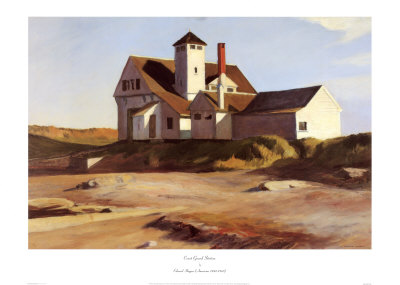The American painter Edward Hopper is one of the greatest exponents of realism in the twentieth century.
Despite having had two major retrospectives during his lifetime - one at the Museum of Modern Art in New York in 1933 and another at the Whitney Museum in 1950 - for most of the years that he was actively painting his stark, pictoral works that depicted the emerging American metropolis and landscapes in upstate New York received little critical acclaim.
Unable to win the favor of wealthy New York socialites and art world elites (with the notable exception of Gertrude Vanderbilt Whitney, who gave Hopper his first solo show at the Whitney Studio Club in 1920), Hopper would have to support himself working as an illustrator.
Although he was quite successful as an illustrator working for both advertising agencies and as a freelancer, Hopper found this work to be unfulfilling and creatively stifling, The fact that he was unable to make a decent living solely from painting was a great source of consternation for Hopper throughout much of his life.
That Hopper's paintings were underappreciated during his life is ironic of course when we consider that today his paintings are considered to be among the most important in the entire cannon of 20th century art in the United States.
These include the paintings that Edward Hopper made during his frequent trips with his wife and muse Josephine Nivison to the New England coast.
Coast Guard Station is one such painting. Although this painting is highly representational and could even be categorized as 'realism', it is a far cry from the merely decorative postcard art that depicts similar scenes.
One can still sense the influence of Edouard Manet and Claude Monet in Coast Guard Station, and the subject matter itself suggests a far more sinister undertone (drowning, loss of life etc...), which is another common theme throughout Edward Hopper's work.




